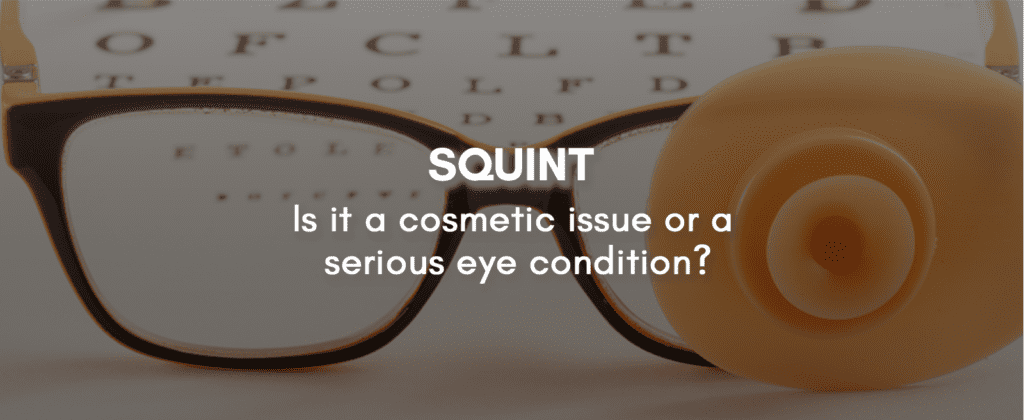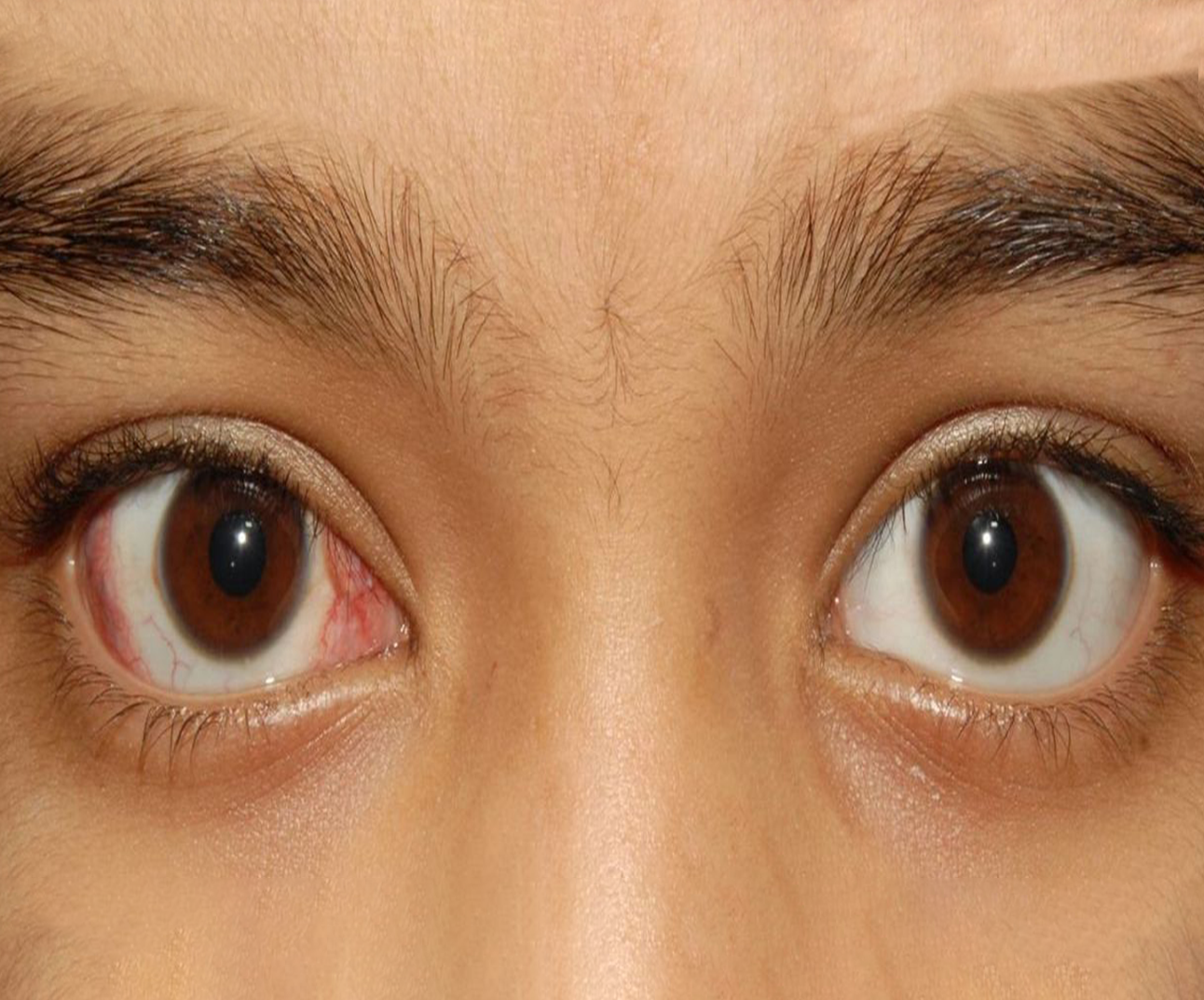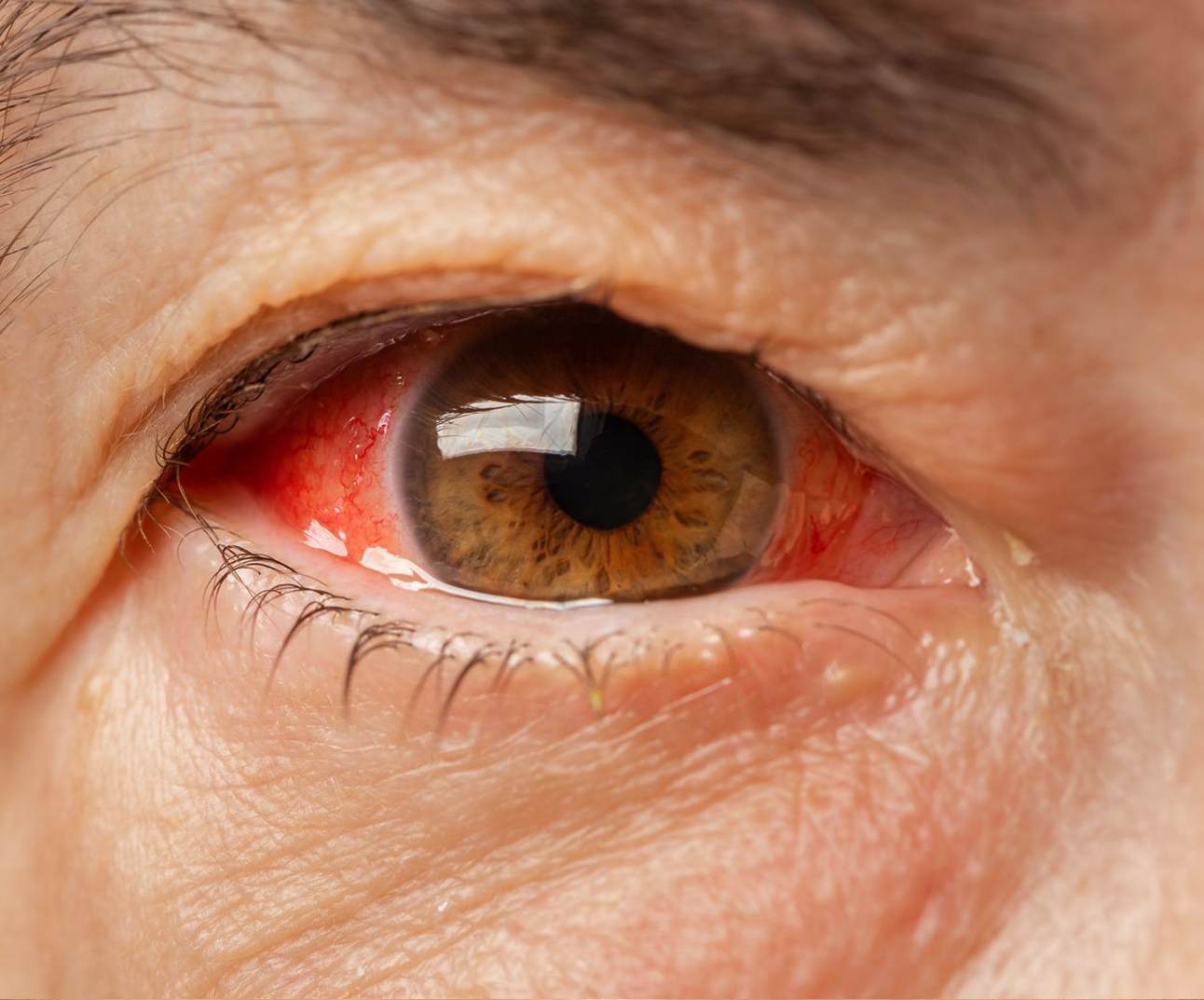SQUINT
Is it a cosmetic issue or a serious eye condition?

Squint is an often-seen eye problem that can occur at any age but must be treated quickly in children to avoid long-term vision issues. It occurs when the eyes are misaligned and point in different directions; untreated squints can lead to amblyopia (lazy eye) or decreased 3D vision – factors that don’t affect adults as drastically due to their already developed visual pathways. Early diagnosis and treatment of a squint before adulthood increases a patient’s chances for improved outcomes.
SQUINT SYMPTOM CHECKER






FAQ
FREQUENTLY ASKED QUESTIONS
There is no such cause per say found yet that causes keratoconus. However, it is suspected to be caused due to environmental and genetic factors as every 1 out of 10 people with keratoconus also have a parent or both with the same condition.
Consult an ophthalmologist if your eyesight is worsening rapidly or you have symptoms like inability to wear contact lenses, distortion of vision, eye irritation or itching, blurry vision. If you witness any one or all of these symptoms, it is advisable to consult a specialist soon.
Generally, keratoconus affects both the eyes but the effect is more severe on one eye than the other.
Keratoconus usually begins to affect people between the ages of 10 years upto 25 years.
Keratoconus is not a common type of eye disease, but it is by no means rare in the present time. It is estimated to occur in approximately 1 out of every 2000 persons in the general population.
If you have a family history of someone suffering from keratoconus then it slightly increases your chances of developing this problem as it is suspected to have a genetic cause. Other reasons may involve rubbing your eyes vigorously or an eye injury that may break down the inside lining of the cornea allowing hydrops, the fluid to enter the cornea causing swelling in the cornea and blurred or distorted vision. Inflammation from allergies, atopic eye diseases or asthma may also break down tissue of the cornea possibly causing keratoconus.
In the early stages of keratoconus, one is likely to face vision problems which can be corrected with glasses or soft contact lenses. However, in the later stage it becomes impossible to wear normal soft lenses, in such a situation scleral lenses or other types of rigid lenses may be used to correct the problem of vision.
If the problem persists and keratoconus progresses to an advanced stage, one may have to go through a cornea transplant. Another newly adopted and unconventional treatment for keratoconus is C3R or corneal collagen cross linking which prevents the progression of keratoconus to an advanced stage.
C3R helps in slowing down or stopping the progress of keratoconus. It prevents the condition from worsening and the need for a future cornea transplant. This treatment is usually in addition to other vision correction options. Corneal collagen cross linking or C3R does not reverse cornea changes that have already occurred, it just prevents its progression and slows it down so that you don’t have to go through a cornea transplant which is a major surgery and that is what people generally tend to avoid.
There are generally two types of C3R namely, epithelium off C3R and epithelium on C3R. Your doctor may perform the kind of C3R more suitable to your condition. The difference between epithelium on and epithelium off cross linking is that in epithelium off cross linking, the epithelium which is the outermost layer of the cornea is removed to allow the entry of riboflavin, a type of Vitamin B inside the cornea which is later activated with UV rays. With epithelium on cross linking method, also known as transepithelial cross linking, the corneal epithelium is not removed during the procedure and is left intact.
There are different tests that your doctor may conduct before following up for the treatment to better understand your eye problem and determine more details regarding the shape of your cornea. Tests to determine keratoconus include eye sight test, eye refraction, slit lamp examination, keratometry and computerised corneal mapping. These tests help your doctor to better understand your condition and suggest you a treatment accordingly. Eye refraction is to understand your vision problems whereas a slit lamp examination evaluates the shape of your cornea and looks for other potential problems in your eye. Keratometry and computerised corneal mapping is to measure the size and basic shape of your cornea and through reflection or special photography tests. It also helps to detect early signs of keratoconus.
The success rate of collagen cross linking in preventing bulging and thinning of the cornea is over 90%. In C3R, you do not require eye donation as it is required in cornea transplant. It is a simpler and more effective treatment to prevent the progression of keratoconus.
Like every other treatment, there are few potential risks associated with corneal collagen cross linking too. It involves discomfort in the eye, hazy vision for a short term, inability to wear contact lenses for a few weeks after you get the treatment done and occasional changes in the eye sight.
The aim of C3R is to strengthen the cornea by increasing the number of anchors that bond collagen fibres together. It prevents the progression of keratoconus to an advanced stage.
You are most likely to experience discomfort in the eye for a short period of time soon after the treatment. Redness in the eye, mild pain and watering, an unusual body sensation for a few days are other possible side effects of the treatment. However, your doctor shall prescribe medicines and antibiotic drops to prevent infection in the eye, get away with these problems and heal sooner. One most important thing that your doctor will highly recommend you is not to rub your eye after the treatment until it gets better.
Our ophthalmologists and specialists at visual aids centre are expertise with advanced diagnosis and treatment for keratoconus and have extensive experience as well as training in the treatment of cornea diseases like keratoconus and other eye conditions.
EXCELLENT

200+ videos
Super Clear Vision After Smile Pro Surgery in Delhi
Smooth, Painless and Quick Smile Pro Procedure
Smile Pro Eye Surgery Experience After 1st Day
Patient From Noida For The Futuristic Smile Pro Surgery
Life Changing Experience With Smile Pro Laser Treatment
Client From Jodhpur For Robotic Vision Correction Surgery
All The Way From Nepal🇳🇵For Laser Vision Correction
Gets Relieved From Specs Through Lasik Surgery
Myopia be Cured Permanently by Smile Pro Surgery








